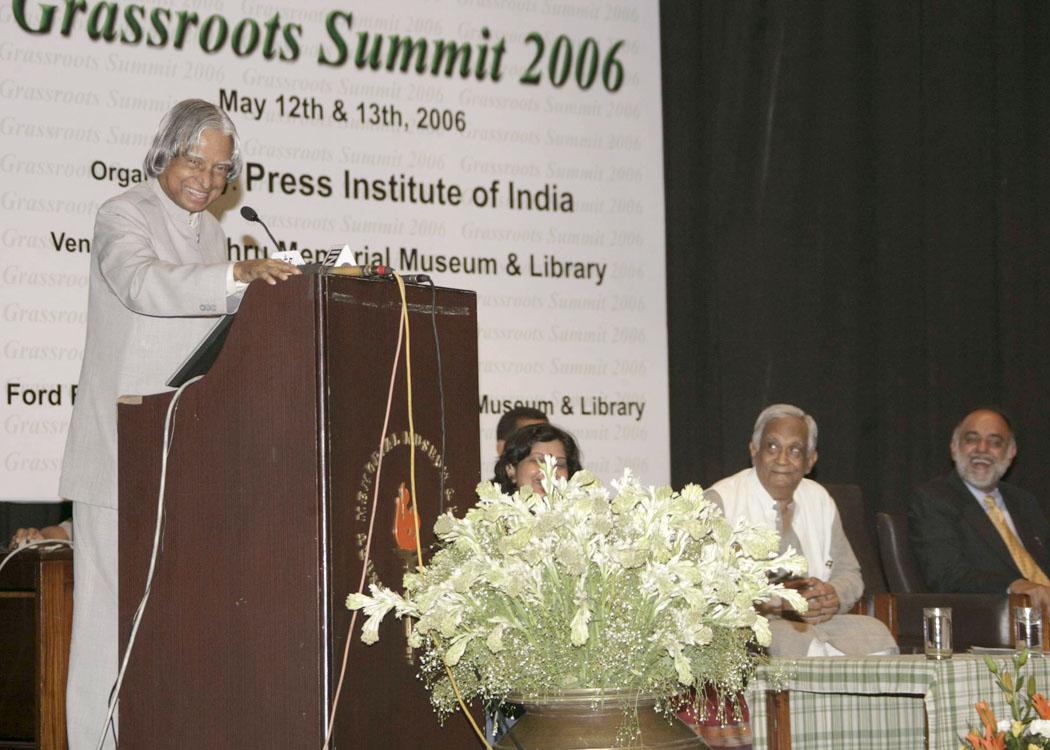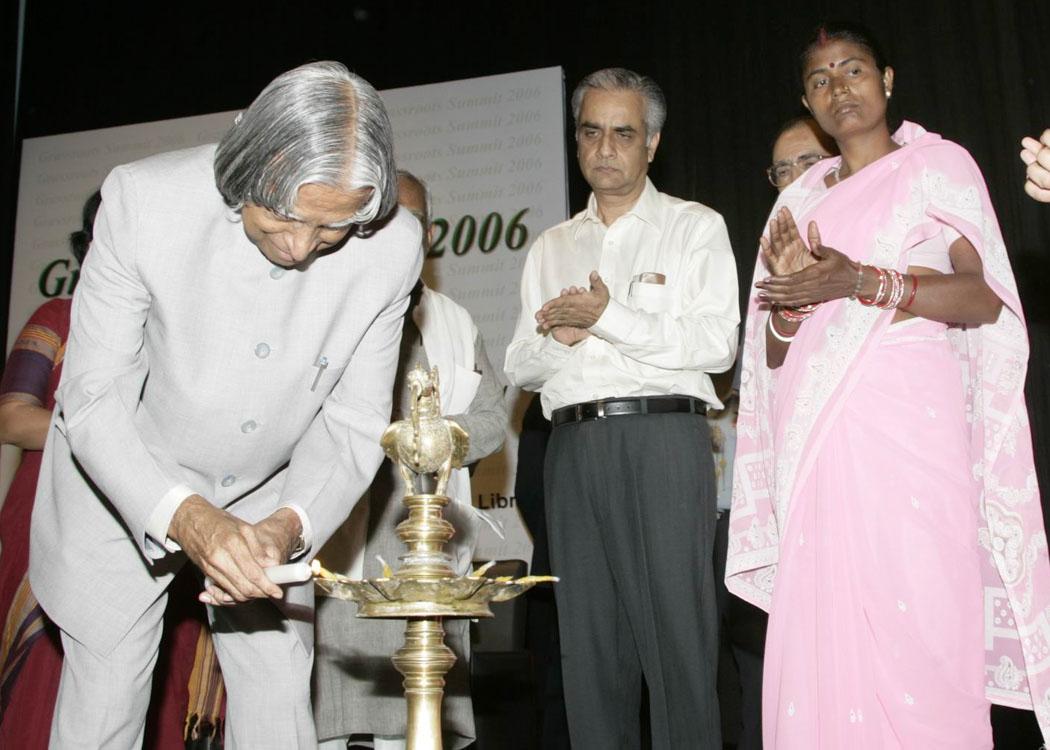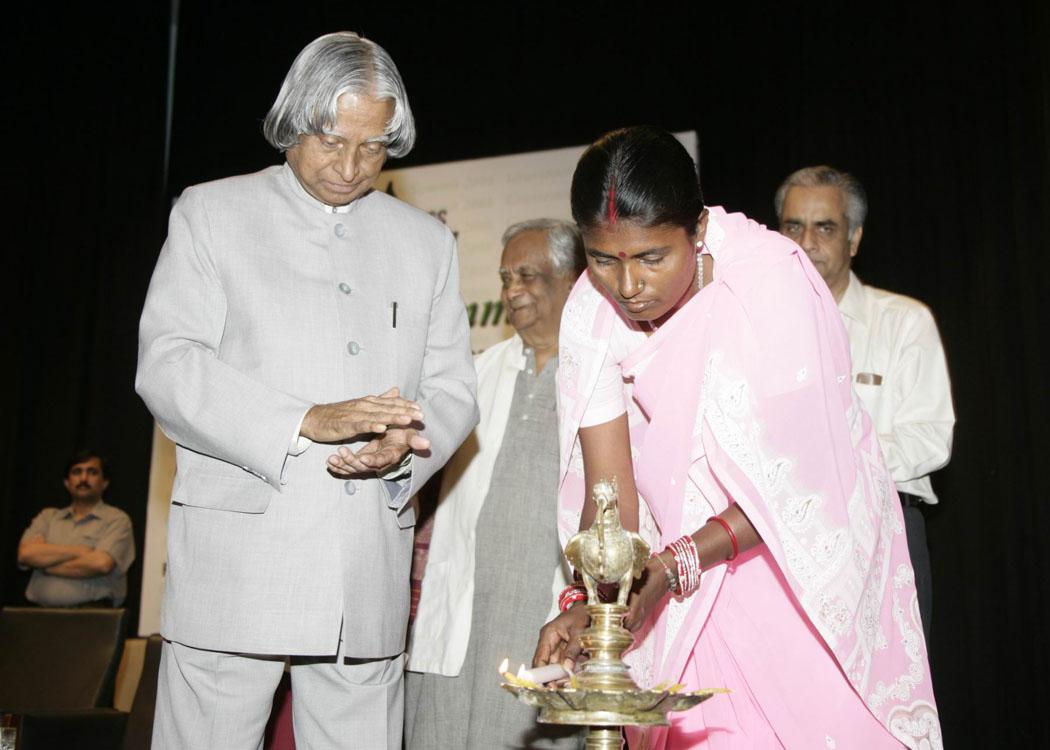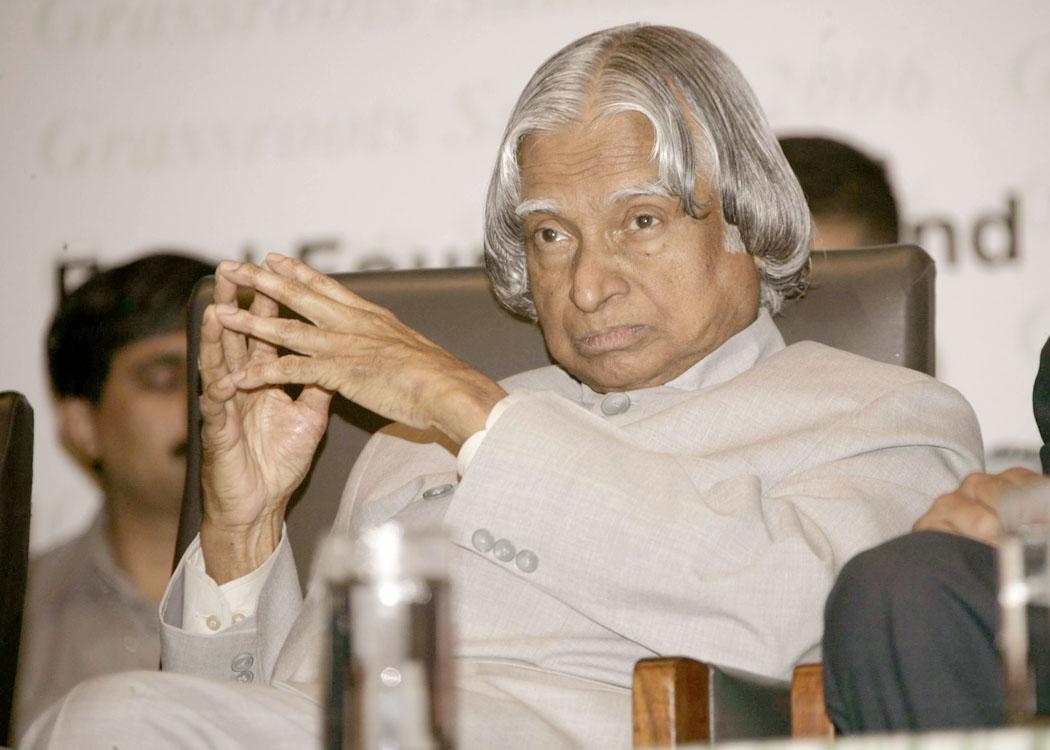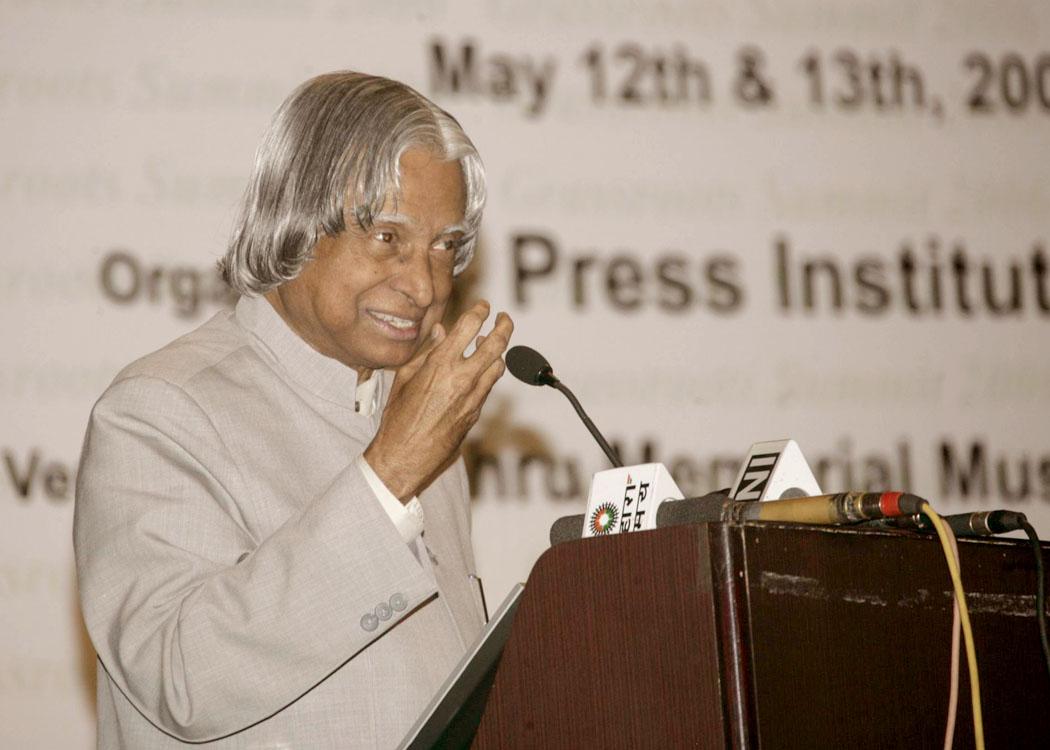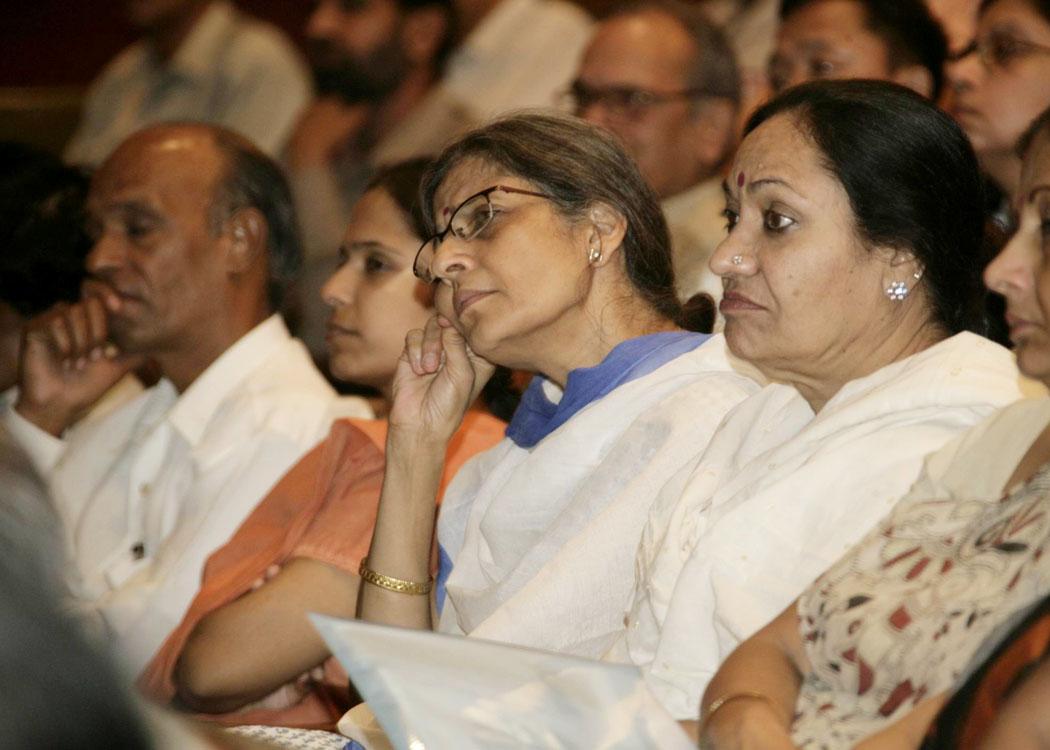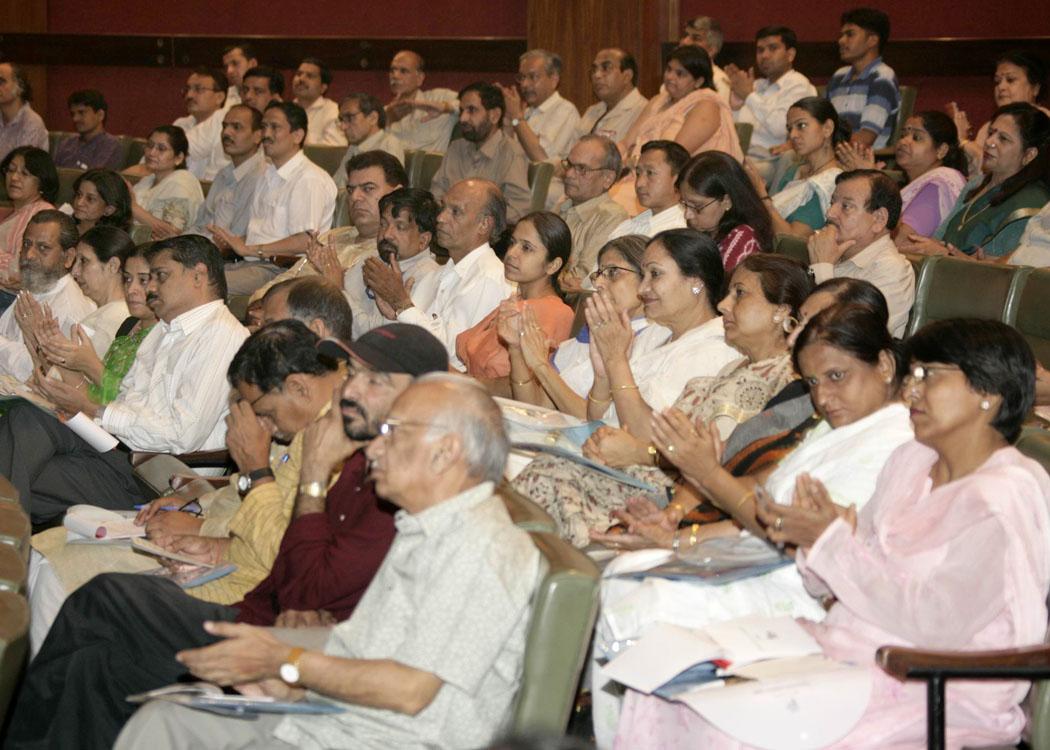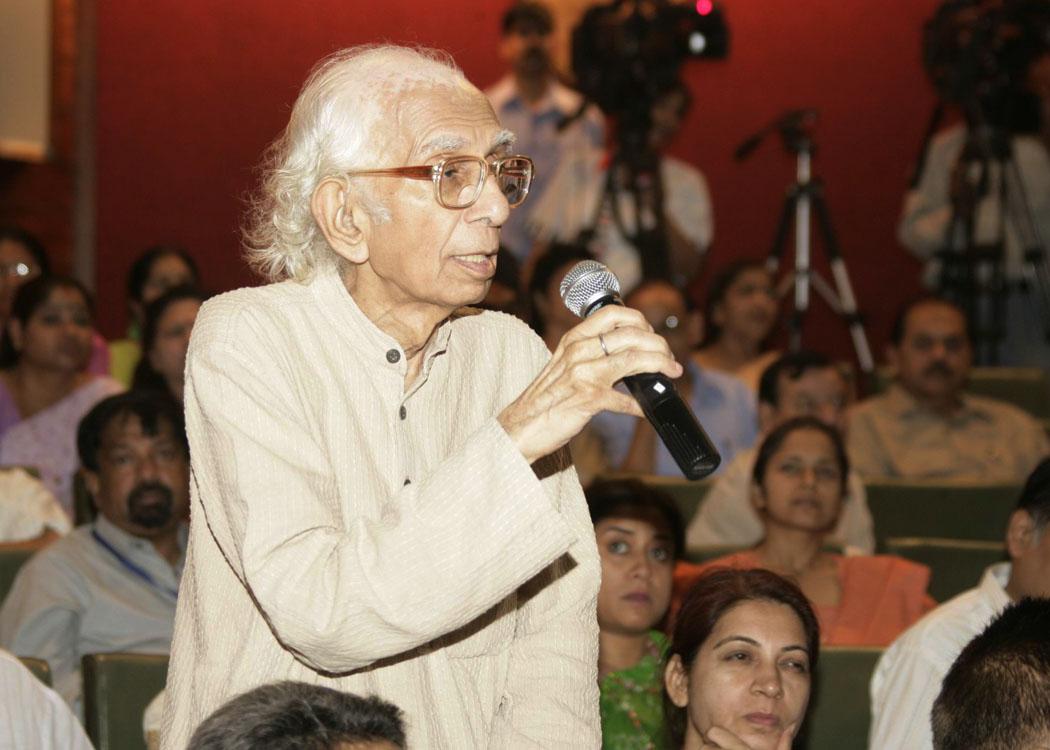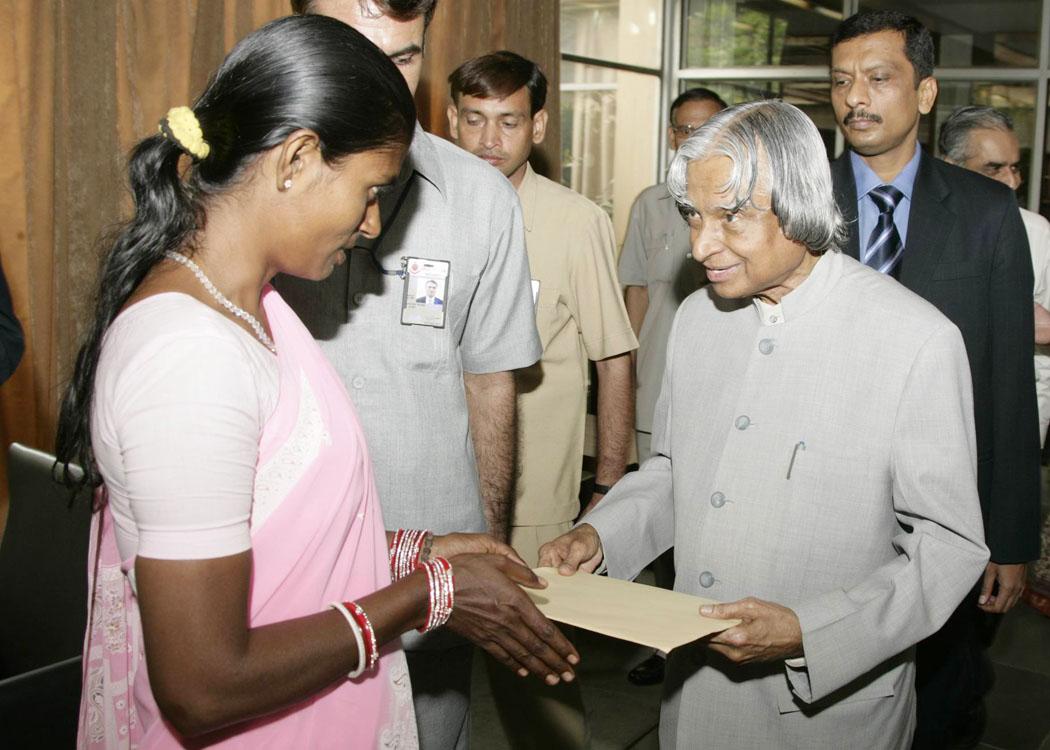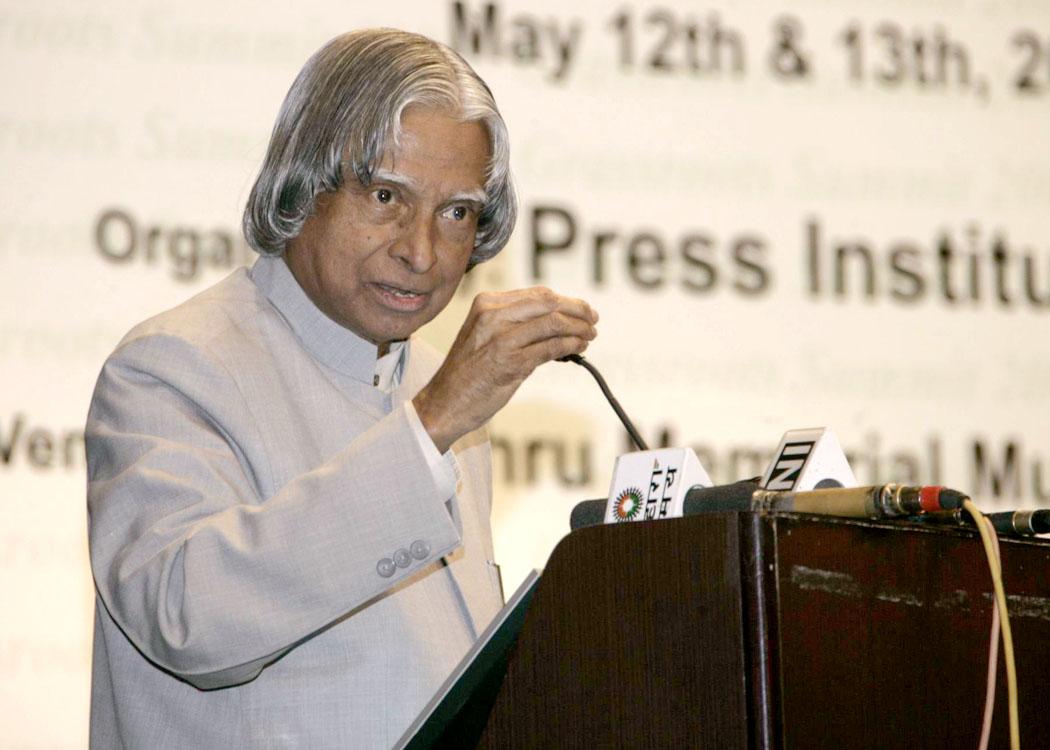Address at the Inauguration of the Grassroots Summit
New Delhi : 12-05-2006
Media for a billion people
"Small aim is a Crime?
I am delighted to participate in the inauguration of the Grassroots Summit organized by the Press Institute of India. Press Institute of India has rich history and tradition, in which during the last four decades it has contributed in celebrating grassroot level development, which is noteworthy. I extend my greetings to all the development planners, economists, scientists, academicians, industrialists, journalists, intellectuals participating in this function.
Friends, when I see you all, you are very important component of the society, I recall my experiences of visiting all the States and Union Territories, and witnessing the unique ambience of the seven hundred million people living in 600,000 villages equivalent to 200,000 Panchayat?s. What is that ambience? I call that ambience as, ?A scene of sweat?. It is the farmers in the agricultural field, it is the fishermen in the rough seas, it is the worker in the industries, teachers in the schools, knowledge workers in the laboratories, knowledge and Pharma industries, health workers removing the pain at all times in healthcare institutions and many other people, who have to be always remembered by this great media community. That is how I have selected the topic for discussion today as ?Media for a billion people?.
Media as a partner in national development
Friends, I would like to share with you a few experiences that are relevant at today?s Grass root summit.
(a) Fellows of NVA: M.S. Swaminathan Research Foundation (MSSRF) is engaged in the capacity building activity for rural development through rural youth. The Foundation had organized a meet of the national fellows some time back. The title of ?Fellow? is normally attached with the academicians, intellectuals, scientists, historians and economists. Here, the fellows I am talking about are the grass root workers drawn from various walks of life, who can make a difference to people living in the rural ambience. Their only potential is experience and enthusiasm to serve society.
I had met and interacted with over 140 fellows coming from different rural parts of the country. It is indeed a celebration of our rural core competence. The Foundation has really thought of an innovative scheme to recognize and train the people who are wedded to rural development and empowering them to promote rural transformation in certain areas. Particularly, I was impressed by the choice of fellows such as Mr. Anwarji of Balipara, Assam who has core competence in education, suitable for local people in areas such as literacy, sanitation and the use of ICT. Ms. Pushpa Ben of Village Sokhada, Gujarat who has the core competence in water conservation and vegetable vending; Ms. Vijyantha Raut of Nimgoan Bhogi, Maharastra who has the core competence of social work particularly in micro credit movement, Mr. Narsingh Singh from Charanwala Bajju village of Rajasthan who has the core competence in Computer education in rural areas; Mr. V. Deenadhayalan from Umbalchery village, Tamil Nadu with core competence in indigenous live stock keeping and also practicing animal healing using herbal plants. This clearly indicates the spectrum of experience of the fellows selected. I would recommend that journalists should interact with such grassroot social reformers and bring out their core competence, dedication and experience in serving rural communities, which can become a model for our youth to follow.
Friends, after I took over as President, apart from visiting States for participating in various functions I also have interacted with students and people from rural areas wherever possible. I have also addressed the State Legislatures wherever possible. So far I have addressed 10 State Legislatures and I will be shortly addressing the Legislatures of Jammu & Kashmir and Madhya Pradesh. In my addresses, the central message has been how the State can be economically developed with high Human Development Index, and how to increase the per capita income of the State? I normally give 8 to 10 missions. These missions have been developed based on the inputs from the Planning Commission, consultation with State ministries, the core competence of the State and the rural development profile of the State which are mapped to Vision 2020 targets. I would suggest that the grassroot media personnel should study these missions and contribute to the development of the corresponding States.
b. Pro-active Media: I would like to share with you an out-of-the box solution. After my address to the Kerala Legislative Assembly, there was a detailed discussion in the Kerala Assembly amongst all political parties. As you know, the media in Kerala is very alert and dynamic. They took up the mission and extended the discussion to the people and all the political leaders, inviting suggestions from all of them. I would like to share with you how Malayala Manorama contributed to the document which I presented to the Kerala Assembly. Malayala Manoroma translated this document ?Missions for Kerala?s prosperity? and ensured that it reached all the readers and various active development groups. Also the media organized six workshops, in different places in the State for discussing all the ten missions and seeking the operational problems and their solutions. In this workshop, ministers, political leaders, government functionaries and media personal participated. I also interacted with them during the concluding session through video conferencing. The media finally submitted their recommendations to the Government for implementation. This proactive step undertaken by the media shows how the media can be an effective partner in the national development.
Friends, I am sharing this experience with you, which is very important for the media to be a partner in national missions, such as Developed India 2020, PURA and the recently sanctioned ?Bharat Nirman? programme with an investment of Rs. 1,74,000 crore to be executed in 4 years by the Government. There is another important programme, called the Rural Employment Guarantee Scheme covering 200 districts. In addition, the Government has also passed an act called the ?Right to Education Act? for providing compulsory and free education to all children between 5 to 13 years. All these programmes are very important national programmes and particularly the Grassroot media should take interest, highlight the positive aspects and provide solutions to difficult aspects through nationwide consultations. This will certainly make a difference in the implementation of the programme and bring smiles to the faces of our billion people.
Now, I would like to discuss some of the innovative development programmes that need media attention, which I have come across in different parts of the country.
c. PURA (Providing Urban Amenities in Rural Areas): The integrated method which will bring prosperity to rural India is called PURA, which envisages four connectivities: the physical connectivity of village clusters through quality roads and transport; electronic connectivity through tele-communication with high bandwidth fiber optic cables reaching the rural areas from urban cities and through internet kiosks; knowledge connectivity through education, skill training for farmers, artisans and crafts persons and entrepreneurship programmes. These three connectives will lead to economic connectivity through the establishment of enterprises with the help of banks, micro credit and marketing of products. We need to establish approximately 7000 PURA Complexes in the country encompassing over 2 lakh Village Panchayats.
Operational PURA: There are already four operational PURAs in the country pioneered by private institutions independent of Government efforts. They are the Periyar PURA in Vallam, Tamil Nadu, Loni Pura in Loni, Maharastra, Chitrakoot PURA in Madhya Pradesh and Byrraju PURA in Andhra Pradesh. Now I would like to share the experiences of my recent visit to Byyraju PURA in Bhimavaram, Andra Pradesh. Byrraju Foundation of Satyam Computer Services has undertaken the mission of establishing 32 Ashwini centers benefiting 116 villages with a population of around 500,000 people. It has provided electronic connectivity through wireless (512 kbps to 2 mbps), knowledge connectivity in cooperation with the National Academy of Construction, Hyderabad and other domain experts, thereby creating economic connectivity in these villages.
Economic Connectivity: During the last 4 years of its operations, it has skill enabled and knowledge enabled people in areas such as construction, tailoring, garment production, IT and spoken English. This programme has resulted in the creation of 3000 jobs with the minimum earning of Rs. 3000 per month, which is 3 times that of the earlier earning potential. A rural BPO Gram IT, established in Jallikakinada center has trained unemployed graduates in IT skills and spoken English and employed one hundred people to do BPO operations such as transaction processing of Human Resource data of Satyam Computers as back office processing; data processing of one million self-help-group members of Andhra Pradesh such as financial data, accounting data, spending patterns and cultural aspects under the programme ?Mapping the bottom of the Pyramid?. This Gram IT BPO has led to the 10% reverse migration from Hyderabad to Bhimavaram. I am sure this Model can be replicated by many of our IT companies in the rural sector to create PURA clusters and bring rural transformation. Journalists assembled here today can definitely study this PURA and analyze the impact it has made in improving the quality of life for the people living in this cluster. Based on this study, they can spread the message of the benefits of PURA to different regions in the country. Now I would like to talk about the important facility established by the Ministry of Agriculture which should be brought to the notice of all rural people in the country for deriving maximum benefits.
d. Domain Service Provider for PURA Complex: I have studied a system which is working and used by the farmers and fishermen in different parts of the country. This is called the Kisan Call Centre (KCC). Kisan Call Centre offers three levels of interaction and support in agriculture, fisheries and animal husbandry domains through nationally nominated experts and corresponding directorates at the central level. In the past one year of its operation the call centres have provided consultancy, information, assistance and guidance to over 5 lakh callers from villages in eight States. Anywhere in India, people can call the number 1551 as a toll free number to get the services. The top users of the scheme are Maharastra and Tamil Nadu followed by Uttar Pradesh and Rajasthan. I have studied some of the typical questions answered by the call centres, which I would like to share with you.
1. Question from Warangal: In cotton, what are the suitable varieties to be taken and when can we avail the varieties?
2. Question from Anathapur: What is the seed treatment of Groundnut with dosage?
3. Question from Cuddapah: What are the ways to get the Citrus fruits ripened quickly?
4. Question from Indore: In which market will I get good price for my cotton produce?
5. Question from Jalandhar: What is the method of controlling yellowing in Paddy nursery?
These questions and thousands were answered by the Kisan Call Centre?s agricultural and fisheries specialists at different levels and enabled the farmers to implement these suggestions. This is the working system for providing domain services in the fields of agriculture, fisheries and animal husbandry. The journalists assembled here particularly those who report from the States may like to take note of this facility and spread the message in their region, as I find that many of our farmers in certain States are not fully aware of the existence of such a facility. This will enable our farmers to acquire knowledge and guidance for carrying out their day-to-day activities and enable them to enhance farm productivity. Yesterday, as a part of my Technology Day 2006 address, I have brought out a number of grassroot innovations. These innovations must reach the people in our rural areas through media action.
Media Research
I have a suggestion particularly to the members of the media consisting of editors, journalists, correspondents and reporters. In our country, it is essential to have research wings in academic institutions developing media personnel in reporting news, event analysis and highlights. This will enable our journalists to carry out original research on topics of national interest and provide solutions to medium and long term problems. The owners of newspapers should encourage research being carried out by experienced and young reporters for acquiring post-graduate qualifications which will improve the quality of content of the print media. Participating media members must realize that continuous updating of knowledge in research environment is essential for all media personnel. For example, before any issue is discussed in foreign newspapers, they send it to an internal research group where data is studied, verified and factual news is generated and sent for publication. When there was a critical comment about outsourcing to India, a US journalist stayed in India and studied the issue and found out that the companies engaged in Business Process Outsourcing (BPOs) were carrying out business using imported equipment from USA and Europe. Thus, they found that the BPO industries provided an indirect market for the hardware industries of the USA and Europe. Immediately this was reported in the Indian media in a big way. Similarly a Discovery Channel media person wanted to study India?s growth in Information Technology, Thomas Friedman came to India and stayed for a month and visited Bangalore and other places. Based on his news analysis he wrote a book titled ? The World is Flat?. This book has become famous not only in India but throughout the world. Such is the power of research. I would suggest our Indian newspaper agencies should encourage research being carried out by our correspondents and journalists within India in academic research institutions, which will definitely improve the quality of our reporting and enhance the participation of journalists in national development missions.
Missions for grassroots journalists
In the present development context of the nation, I would like grassroots journalists to take up the theme of a Developed India by 2020 as their primary mission. To achieve this the journalists must become development partners in the programme of PURA (Providing Urban Amenities in Rural Areas), energy independence mission, celebrate every aspect of success of the nation particularly in rural areas, work towards promotion of a corruption free society, help in the creation of enlightened citizens and promote harmony in the nation.
Conclusion
It is said that ?Small aim is a Crime?. Grassroots journalists should have a big aim of the concern of a billion people. Fortunately, India has a vision and has the youth power which is the engine that can give the thrust to the movement towards growth. Ignited minds of the youth are the most powerful resource compared to any other resource on the Earth, above the Earth and under the Earth. The Indian youth faces the twin problems of provision of quality education to a large number of people, that means in institutions of higher learning such as engineering, medical and specialized sciences. We have to ensure that a large number of seats are made available. This mission can be achieved by the public-private partnership. In this connection I have developed a system of global human resource cadre. In the 21st century, India needs large number of talented youth with higher education for the task of knowledge acquisition, knowledge imparting, knowledge creation and knowledge sharing. I am working for it. At present India has five hundred and forty million youth under the age of 25, which will continuously be growing till the year 2050. Keeping this resource in mind, the Universities and educational systems should create two cadres of personnel: (1) a global cadre of skilled youth with specific knowledge of special skills (2) another global cadre of youth with higher education. These two cadres will be required not only for powering the manufacturing and services sector of India but also will be needed for fulfilling the human resource requirements of various countries. Thus, the universities will have to work towards increasing the throughput of the higher education system from the existing 6% to 20% by the year 2015, 30% by the year 2020 and 50% by the year 2040. The other Indians who are not covered by the higher education system should all have world class skill sets in areas such as construction, carpentry, electrical systems, repair of mechanical systems, fashion design, para-legal, para-medical, accountancy, sales and marketing, software and hardware maintenance and service, software quality assurance personals etc. No Indian youth should be without either a world-class higher education or without world-class skills sets.
The second problem which the youth faces is that of the generation of employment for about 40 million people. That means our education system has to become entrepreneurial oriented, both in schools and colleges, so that we can create employment generators and not employment seekers. I have discussed these important subjects in my national address on education, employment generation and energy independence. To access the text you can visit my website: . Such national needs concerning the welfare of a billion people have to be discussed, debated and solutions found by the media for dissemination at the grassroots level.
The real mission of the media is to be where there are sweet tears and salty tears. While tears are sweet, spread the happy messages throughout the country. While the tears are salty, critically analyze and spread the message with possible solutions.
The grassroots journalists can certainly provide a positive direction for development by becoming the multiple sails of the ship. I inaugurate the Grassroots Summit and my best wishes to the participants and organizers for the success in their mission of promoting media for a billion people as a development partner.
May God bless you.

